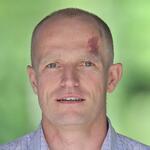Why some viruses stay around permanently
Most viral diseases follow an acute pattern, with infection being followed by recovery and then immunisation. Once you have recovered from an infection, you have a good degree of protection against becoming infected again. But some viruses – for example the herpes virus – are capable of circumventing the immune system and setting up home permanently in the host cells. The molecular processes involved in chronic viral infection are still not well understood.
Disrupt – Evade – Exploit
The aim of the new Research Unit set up by the German Research Foundation (DFG), "Disrupt – Evade – Exploit: Gene Expression and Host Response Programming in DNA Virus Infection" (DEEP-DV), is to unravel the mechanisms in human cells caused by chronic and acute infections with DNA viruses. There are more than 20 families of DNA viruses, including not only the herpes virus but also papillomaviruses and adenoviruses, which can infect the eyes, airways and gastrointestinal tract.
Goals of the research group FOR5200 DEEP-DV
Twelve working groups are involved in DEEP-DV, including the team headed by Professor Markus Landthaler at the Berlin Institute for Medical Systems Biology (BIMSB) in the Max Delbrück Center for Molecular Medicine in the Helmholtz Association (MDC). The spokespersons for the project are Professor Melanie Brinkmann from Technische Universität Braunschweig and Professor Nicole Fischer from the University Medical Center Hamburg-Eppendorf (UKE). In addition to the MDC, the Research Unit includes scientists from Medizinische Hochschule Hannover (MHH, Hannover Medical School), the Leibniz Institute for Experimental Virology Hamburg, Freie Universität Berlin, the University of Würzburg, Ulm University Hospital and LMU Munich.
Understanding the molecular basis of the herpes virus
We want to understand how the virus modifies the host cell to be able to remain in it permanently.
Markus Landthaler's team works with herpes viruses. Around 80% of people worldwide carry herpes type HSV-1. In most people the infection goes unnoticed or can be seen in the form of painful blisters, for example on the lips. In rare cases, for example in newborns or people with a weak immune system, herpes viruses can cause inflammation in the brain or lungs. “We want to understand how the virus modifies the host cell to be able to remain in it permanently,” says Landthaler. The researchers are especially interested in the proteins formed by the virus when it penetrates the host cell. They are focusing on ICP4, a protein that the virus needs to convert its own DNA into RNA. Could ICP4 also have the ability to bind to the RNA of the host cell? If so, how does this binding take place and what role does it play? Does the virus use it to interact with the host cell? These are the questions that Landthaler and his team are seeking to answer as part of DEEP-DV.
To identify binding sites between viral proteins and host cell RNA, one method the researchers will be using is PAR-CLIP, a special biochemical technique that Markus Landthaler helped to develop more than ten years ago. It involves crosslinking proteins and RNA molecules using UV light. The resulting complexes are split to allow the RNA to be separated from the protein strands and sequenced in a high-throughput process. This will enable the researchers to identify whether, and where, proteins are binding to RNA.
The search for new treatment approaches
If, over the next four years – the duration of the DEEP-DV project – the researchers succeed in finding relevant interactions between the proteins formed by the virus and the RNA of infected cells, this will generate new starting points for drug research. “RNA-binding proteins can be blocked,” explains Markus Landthaler. “So this could enable us to search for new ways of treating chronic viral infections.” But there is still a long way to go, he adds.
- DFG establishes 13 new Research Units
-
-
DEEP-DV is one of 13 new Research Units established by the German Research Foundation (DFG). For the next four years, the new DFG Research Units will receive a total of around €47.4 million in funding, including a 22% programme allowance for indirect project costs. For Markus Landthaler's working group, among other things this will support a fully funded doctoral post for the duration of the project.
Text: Jana Ehrhardt-Joswig
Further information






